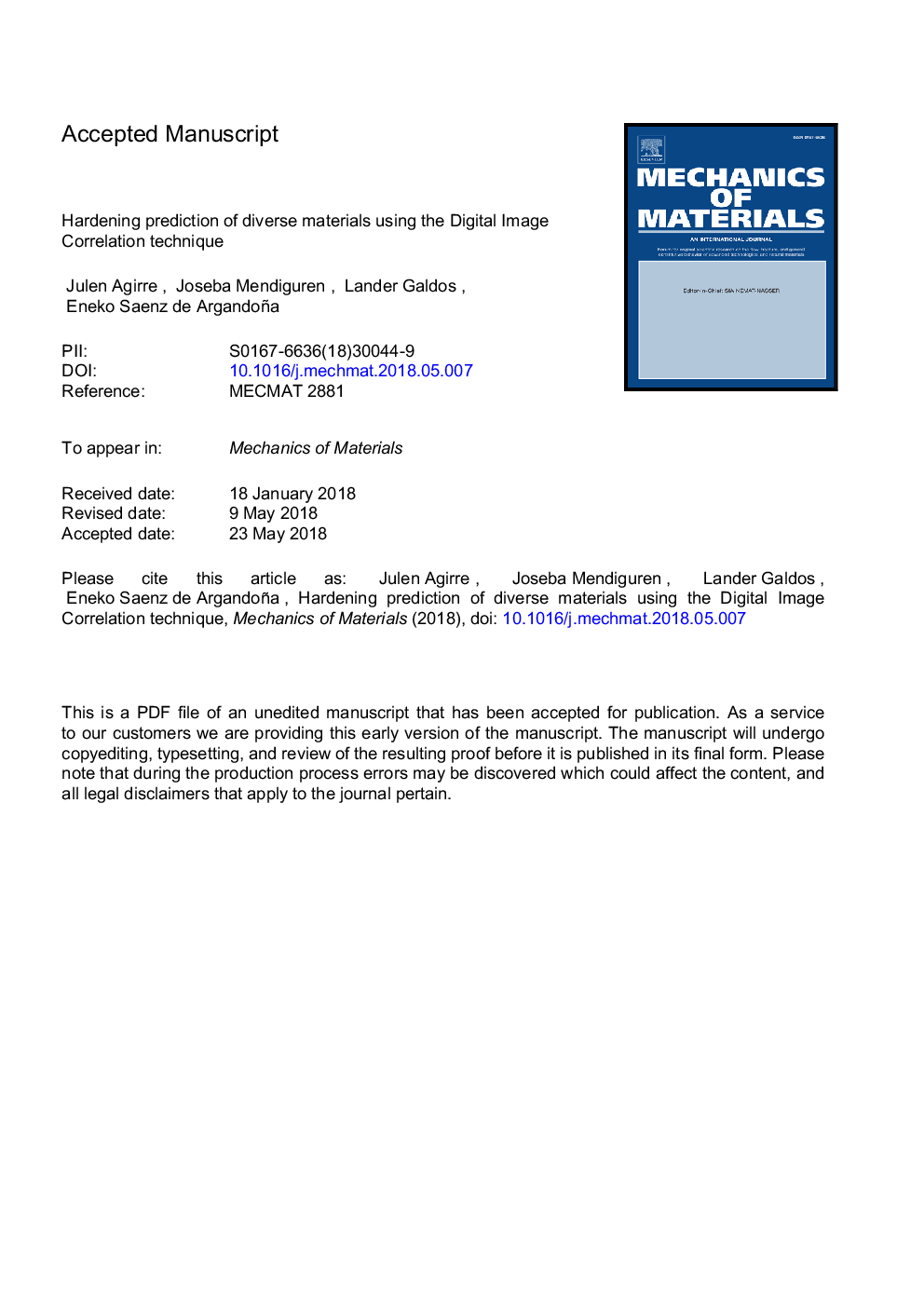| Article ID | Journal | Published Year | Pages | File Type |
|---|---|---|---|---|
| 7178486 | Mechanics of Materials | 2018 | 27 Pages |
Abstract
In recent years, due to the introduction of higher resistance materials in the automotive sector, sheet metal-forming tool-makers have been forced to deal with more challenging process designs. Therefore, the optimisation of the manufacturing process has become a key factor in obtaining a part which fits the required tolerances, and the finite element method (FEM) is the most widely used technique to speed up that optimisation time. However, to obtain a numerical result as close as possible to those of industrial conditions, the FEM software inputs must be highly accurate. The present work is focused on the hardening extension of the currently available reduced-formability materials, as it is a key factor in the correct prediction of the stress state and hence, of the springback during a sheet metal-forming process. The objective in this work was the selection of the most appropriate hardening model to extend the flow curve beyond the necking limit for a wide variety of material families currently utilised in the industrial environment. To carry out that analysis, a digital image correlation (DIC) technique was utilised during conventional tensile tests to extend the experimental flow curves of the analysed materials. Commonly used hardening models were fitted to the experimental tensile flow curves with the aim of selecting the model that best predicts the hardening behaviour of each analysed material family. The results showed that the DIC technique was valid for the extension of the hardening curve of the analysed materials and for the final selection of the most suitable hardening model for each analysed material family.
Related Topics
Physical Sciences and Engineering
Engineering
Mechanical Engineering
Authors
Julen Agirre, Lander Galdos, Eneko Saenz de Argandoña, Joseba Mendiguren,
